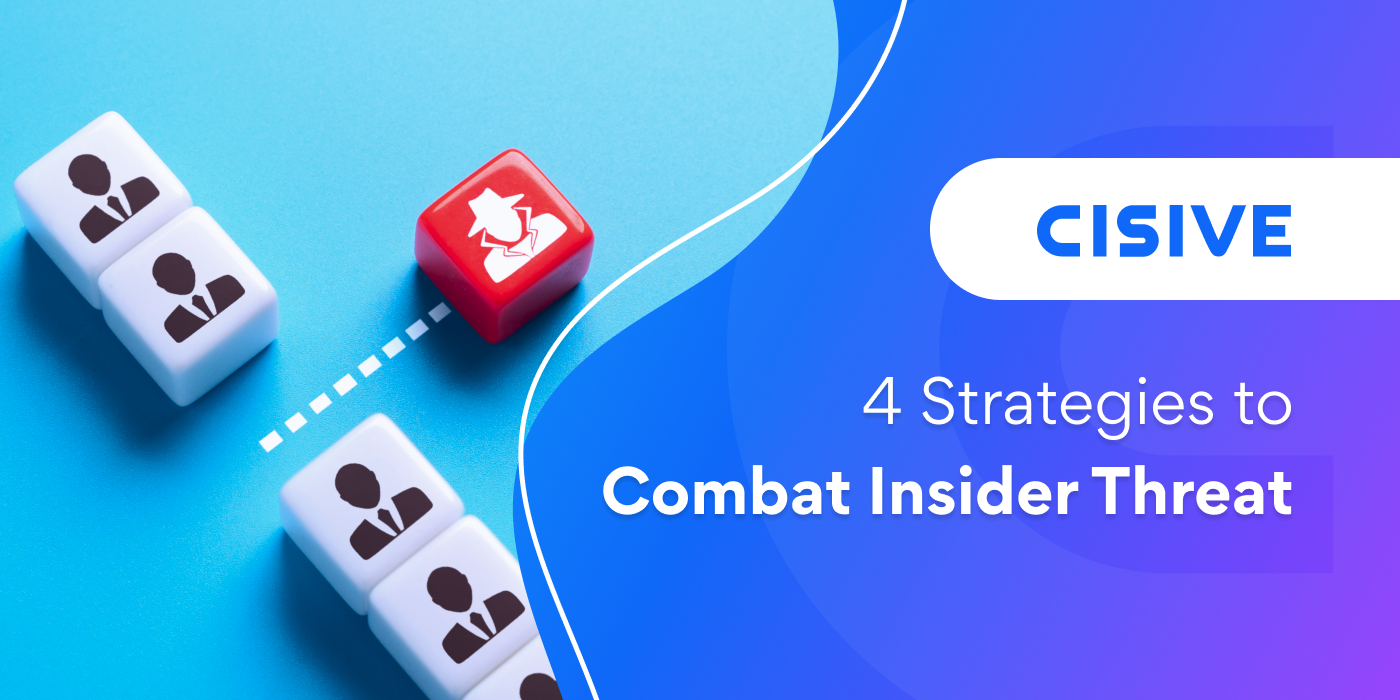

While traditional background checks are a necessary first step in hiring, they only offer a...

The biggest threat to your organization might already be on the payroll. Nearly 70% of organizations feel moderately to extremely vulnerable to insider attacks, according to the 2024 Insider Risk Report by Cybersecurity Insiders. And for good reason: some of the most damaging breaches don’t come from outsiders, they come from trusted individuals already inside the system. An employee with remote access to sensitive data. A vendor with an outdated license. A clinician with a recent disciplinary action that slipped through unnoticed.
Despite the risk, many organizations still treat background screening as a one-time event. That leaves dangerous blind spots—particularly in high-risk, high-compliance industries like healthcare, transportation, and financial services.
Insider threat prevention is about designing a system that continuously verifies, alerts, and adapts before a missed detail becomes a serious liability.
Most companies screen for risk before the employee starts work, then stop looking. That creates a wide open window for malicious insider threats to emerge quietly, without oversight. Licenses expire. New criminal charges are filed. Regulatory sanctions appear. But without a system in place to catch those developments in real time, employers are left exposed.
The consequences aren’t hypothetical. A driver with a suspended license might stay on the road for weeks before the issue is discovered. A healthcare provider could practice under lapsed credentials. In a financial services firm, a newly charged fraud offense might go undetected until after the damage is done.
Technology has made it possible to close the gap between a pre-employment snapshot and ongoing monitoring. Public records monitoring, real-time alerts, and license verification tools now offer a way to track post-hire risk events automatically. But too many organizations haven’t made the shift. They’re still playing defense with a system designed for the past.

No matter the sector, insider threat incidents share a common truth: they’re difficult to spot and easy to underestimate. While the signs differ from an organization's data theft in finance, to expired licenses in healthcare, to fake credentials in logistics, the core vulnerabilities remain the same: too much trust, too little verification, and screening systems that stop after onboarding.
With hybrid work, complex vendor ecosystems, and faster hiring cycles, identity and credential fraud are harder to detect. Continuous insider risk management is the only way to decrease risk while keeping pace.
Let’s take a closer look at how insider threats play out across a few particularly high-risk sectors.
In healthcare, one misstep can mean compromised patient safety or regulatory penalties. Insider threats in this space often take the form of expired licenses, falsified certifications, or providers practicing outside of approved scopes. The risk is especially high when contingent workers or students move through different facilities or state jurisdictions.
Credential validation, license monitoring, and exclusion screening must be ongoing—not just part of the initial hire. Without that infrastructure, healthcare employers open themselves to liability and reputational harm.
A suspended license. A failed drug test. An undisclosed criminal charge. In transportation, potential insider threats are on the frontlines of your workforce operating moving vehicles and representing your company at pickup and drop off. Drivers who fall out of compliance mid-employment pose a direct risk to public safety, cargo, and brand trust.
Too often, these changes go undetected until an incident occurs. Real-time MVR monitoring and FMCSA compliance checks (like those offered through Driver iQ) are essential for keeping non-compliant drivers off the road and reducing liability before it scales.
Companies in e-commerce and gig-based delivery rely on large, fast-moving workforces. That speed creates pressure to onboard quickly. But insider threats don’t disappear just because a shift is short-term. Identity fraud, false work histories, or criminal backgrounds that don’t surface in pre-hire checks can all create real-world consequences.
In this sector, even minor screening failures can lead to customer incidents, social media backlash, or costly litigation. Ongoing screening helps ensure that every person representing your brand is qualified to do so from day one and beyond.
In highly regulated environments like banking and insurance, a bad hire can lead to fines, investor lawsuits, or even disqualification from doing business. Insider threats in the financial industry include unreported conflicts of interest, unresolved sanctions, and employees under investigation for fraud or abusing their role for financial gain.
Post-hire monitoring for financial services professionals, implementing strong access controls, and protection of critical assets are paramount to guard against malicious intent. Not just to protect against future misconduct, but to ensure that ongoing compliance obligations are met across state and international regulatory bodies. Failing to act quickly on newly surfaced security concerns, cyber threats, or data breaches can compromise audits and erode stakeholder confidence.

The most resilient organizations manage insider threat prevention like any other high-stakes operation: with a clear strategy, defined roles, and tools that deliver under pressure. Prevention looks different in every industry, but the fundamentals remain the same.
Determining the right plan for how to prevent insider threat comes down to understanding your risk landscape and building the right safeguards to match.
Insider threat prevention begins before the offer letter goes out. That means going beyond criminal background checks and employment verification. Identity validation, professional license authentication, and role-specific risk screening must be baked into the pre-hire process.
When screening standards vary by role or worker type, blind spots multiply. A contractor with authorized access to the same sensitive information as a full-time employee shouldn’t be held to a lower bar. Consistency is non-negotiable.
From full-time staff to contractors, students, per diem clinicians, and vendor partners—everyone with system access or public-facing roles introduces risk. Screening protocols should reflect that reality.
By applying a unified ongoing screening policy across all worker categories, organizations reduce liability and simplify compliance oversight. Cisive’s clients in healthcare, for example, have eliminated weeks of onboarding delay by building standard workflows that cover both employees and non-employed personnel.
A single background check offers a snapshot. What happens after the hire is where risk often begins. Real-time monitoring picks up where pre-hire screening leaves off. Track arrests, sanctions, license suspensions, and more, automatically.
Cisive’s ongoing monitoring solutions are built to surface red flags as they happen. Public records are scanned daily, and alerts are routed directly to compliance teams. The moment a new risk emerges, the right people know and are able to take action.
Background check data isn’t just pass/fail. It’s a source of workforce intelligence. By analyzing screening results across roles, departments, and locations, organizations can detect patterns like recurring license issues in a specific region or elevated risk among certain vendor groups.
This kind of insight fuels smarter hiring decisions, better policy enforcement, and faster response to emerging threats. Blind spots become measurable and preventable.
Technology can flag threats. Policy can close gaps. But prevention also depends on people. Insider threats thrive in organizations where roles are siloed, standards are inconsistent, and warning signs go ignored.
High-performing organizations don’t leave risk management and data loss prevention to one department. They build a culture where compliance is everyone’s responsibility. That means training teams across departments to recognize behavioral red flags, maintaining clear escalation paths, and reinforcing why the standards exist in the first place.
It also means ensuring compliance leadership has the authority and visibility to act fast when something changes. Monitoring tools are only effective if there’s a system in place to respond to what they reveal.
Security policies aren't static. Neither is trust. Protecting both requires a workforce model that adapts to new threats without slowing down the mission.
Insider threats don’t wait for annual reviews. They don’t flag themselves in onboarding paperwork. And they don’t always look like bad actors.
The best defense is an insider threat program: a screening and monitoring strategy that never stops working. One that scales with your workforce, adjusts in real time, and puts critical insights in the hands of people who know what to do with them.
Talk to a Cisive pro to build an insider threat prevention strategy that protects your organization from the inside out.

While traditional background checks are a necessary first step in hiring, they only offer a...

Background checks rarely make headlines, until they miss something critical. Imagine onboarding a...

Safety is a top priority in the transportation and trucking industry. A key tool for risk...